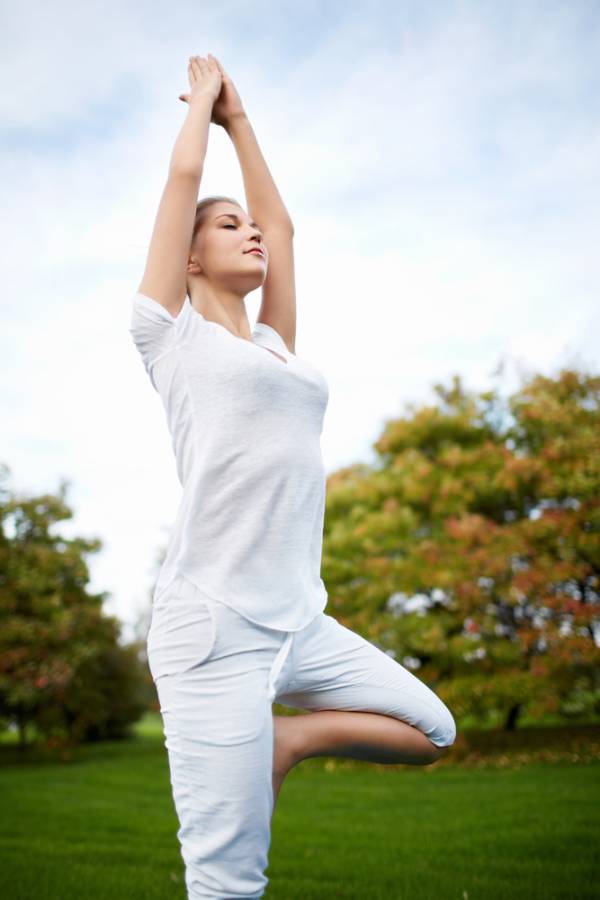I don’t know about you, but after the Fourth of July is when it really starts to feel like summer to me. The days are long and warm, the kids are out playing in full force, and the sun is shining most of the time. It is essential for our wellbeing to soak in the vitamin D of the sun and enjoy the fresh air outdoors. I’m sure you are cycling and running outdoors already, so why not do yoga outdoors too?
If you decide to ditch the studio and take your mat to the sand or grass, there are a few things to keep in mind to modify your practice and make the most of your experience. Find an area at the beach or the park where you can relax and feel a bit secluded. There may be people who walk by, but try to stay focused on your practice and on your breath. If you are at the beach, you will obviously face the ocean. If you are at the park, position yourself to face a beautiful setting as your altar.
When doing yoga on the beach, it is best to skip the mat and opt for a flat sheet, large beach towel, or blanket. I’ve made the mistake of brining a yoga mat to the sand and the yoga mat had to become a “beach yoga mat” afterwards. The indentations in the mat absorb the sand and are really hard to get out. When you unroll the mat indoors it makes a mess everywhere. If you practice on the grass, a blanket or sheet is still ideal as it gives you lots of surface area. The mat moves around on the grass much more than on a hardwood floor.
To get grounded, start with a seated meditation to transition into the moment and into your yoga practice. Just simply sit and watch the breath flowing in and out of the nose. You may even add the mantra, “I am breathing in. I am breathing out.” Do this for a few minutes until you feel you are relaxed and present.
It is best to avoid long holds of poses that put pressure on the wrists such as downward facing, plank, vinyasa, arm balances or handstands. The sand and grass are much softer than the hardwood floors of a yoga studio, and therefore the heel of the hands tend to sink and put pressure on the ligaments of the wrists. Often I will practice a few classical sun salutations to dynamically warm-up the body, but I will forego any other vinyasas.
 Standing poses are great outdoors, which includes things such as warrior poses, triangle, extended side angle pose, and all standing balancing poses. Backbends such as bridge, bow, and camel are great ways to improve flexibility in the back without straining the wrists. Hip openers such as pigeon and cobbler’s pose are also a perfect addition to an outdoor practice. Seated or lying-down twists work well on the sand or grass.
Standing poses are great outdoors, which includes things such as warrior poses, triangle, extended side angle pose, and all standing balancing poses. Backbends such as bridge, bow, and camel are great ways to improve flexibility in the back without straining the wrists. Hip openers such as pigeon and cobbler’s pose are also a perfect addition to an outdoor practice. Seated or lying-down twists work well on the sand or grass.
If you have an existing headstand practice and have no major neck or eye injuries, headstands are really fun to do outside. When I do headstand on the sand I feel like I am ten years old again. It is liberating to see the world from a new perspective – upside down in nature. As with any yoga practice always end in savasana to gain the benefits of the previous poses.
Get out and enjoy the long, warm days by adding an outdoor yoga practice to your routine. In my option, nature is the best yoga studio! Where is your favorite outdoors location for yoga? Please post to comments below.
Photos courtesy of Shutterstock.






